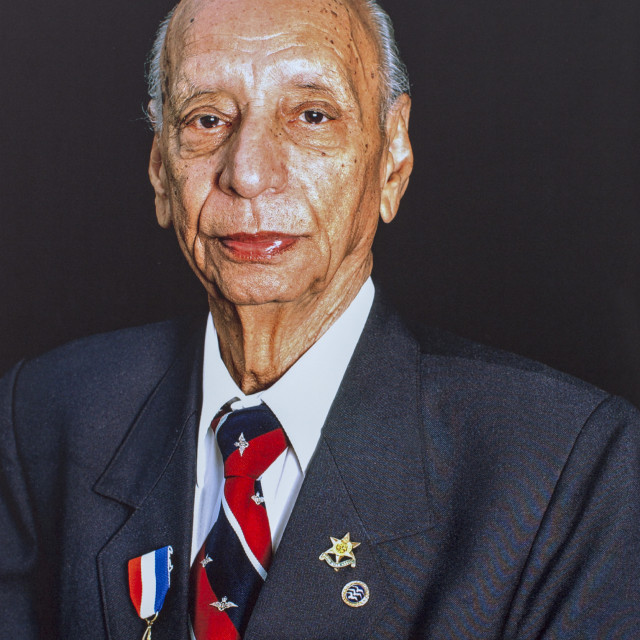Mahinder Singh Pujji
 From India, born in 1918. Pilot and squadron leader in Britain’s Royal Air Force 1940-1945. Photographed in 2002.
From India, born in 1918. Pilot and squadron leader in Britain’s Royal Air Force 1940-1945. Photographed in 2002.
Mahinder Singh Pujji loves to fly; he is a pilot for the Shell petroleum company in India. In August 1940, he is 22 years old and looking for adventure. It therefore does not take long for him to answer an advertisement for pilots in the British RAF. At this time England and India are considered as one and the same country by the young Indian.
Pujji is accepted. He is chosen as one of the 24 Indian pilots who are to defend their colonial master Great Britain from the air. He is among the 2.5 million Indian men who leave their homes in order to defend their mother country during World War II. Pujji’s wages are doubled when he signs the papers of appointment. He takes a firstclass passage to London.
Flying for the RAF gives high status, as Pujji soon notices. He is treated with great respect by his British friends.
He gets VIP-treatment, free cinema tickets, and extra sugar rations – great treats in time of war. He is trained to fly Hurricane and Spitfire fighter planes, and is chosen to be one of eight Indian pilots who will fly battle missions.
He is soon stationed in Squadron no. 258 near Croydon in the south of London, where the only difference between him and the British pilots is his turban.
Pujji insists on wearing his turban during flights. He considers himself a very pious man. A specially made strap holds his headphones in place. An extra turban is in his baggage.
One of Pujji’s first missions is to release bombs over occupied France. He notices explosions around him, reminding him of fireworks. For a few seconds he is overjoyed. And then he understands that he is being fired on by the German Luftwaffe. He is alone up there in the sky, and he is at war.
Pujji’s manoeuvres his Hurricane so that the Germans can’t hit him. Pujji escapes, he remembers that he was not afraid. “I may be an exception, but I remember it as being very exciting”, he says.
But many fellow pilots in his squadron are hit. Every evening there are two or three empty places at the dinner table. Pujji also has some narrow escapes.
One day he is fired on again, and hit hard. The fighter is almost wrecked and about to crash into the English Channel. The voice on his radio tells him sharply to make an emergency sea landing. But Pujji has a problem: he can’t swim. So he disobeys orders and flies on and on and on. Pulls the plane up. There. He can see the White Cliffs of Dover. And he thinks “I’m going to make it”.
The next thing he hears is someone shouting out that he is alive. Pujji can’t see. His eyes are closed. A long length of cloth, his turban, has wrapped around his face. Pujji is convinced that that’s what saved him. He is sent to the hospital, but returns to flying seven days later.
During the next war years Pujji flies hundreds of missions as a major in the RAF. He plays cat and mouse with Japanese fighter pilots; he is transferred to the North African desert, to the Afghan border, to the toughest battles in Burma. He searches for a lost group of 300 American soldiers, finds them and saves them. Pujji leads his squadron until the end of the War.
He is one of the very few Asian pilots to be honoured with the highly recognized decoration, the Distinguished Flying Cross. And he continues to fly after the War. He flies races all over India, he wins glider competitions, and he flies India’s first prime minister, Nehru. In 1974 he gives up his career and moves to Kent in England.
This would change his views on two matters: his feelings for his turban, and his feelings for his old mother country. He removes his turban because it is in the way, and because his feelings for his religion have changed. His enthusiasm for his previous mother country fades as time passes. It is no longer what it used to be.
The respect shown in the past by his British friends has gone: “This is not the England I once knew, but perhaps if I tell my story people may remember us and what we have done.”